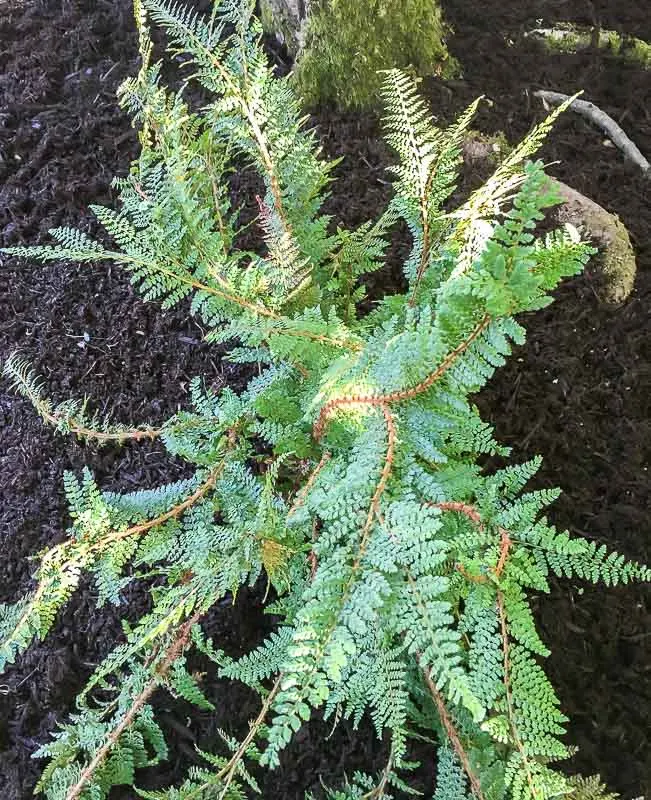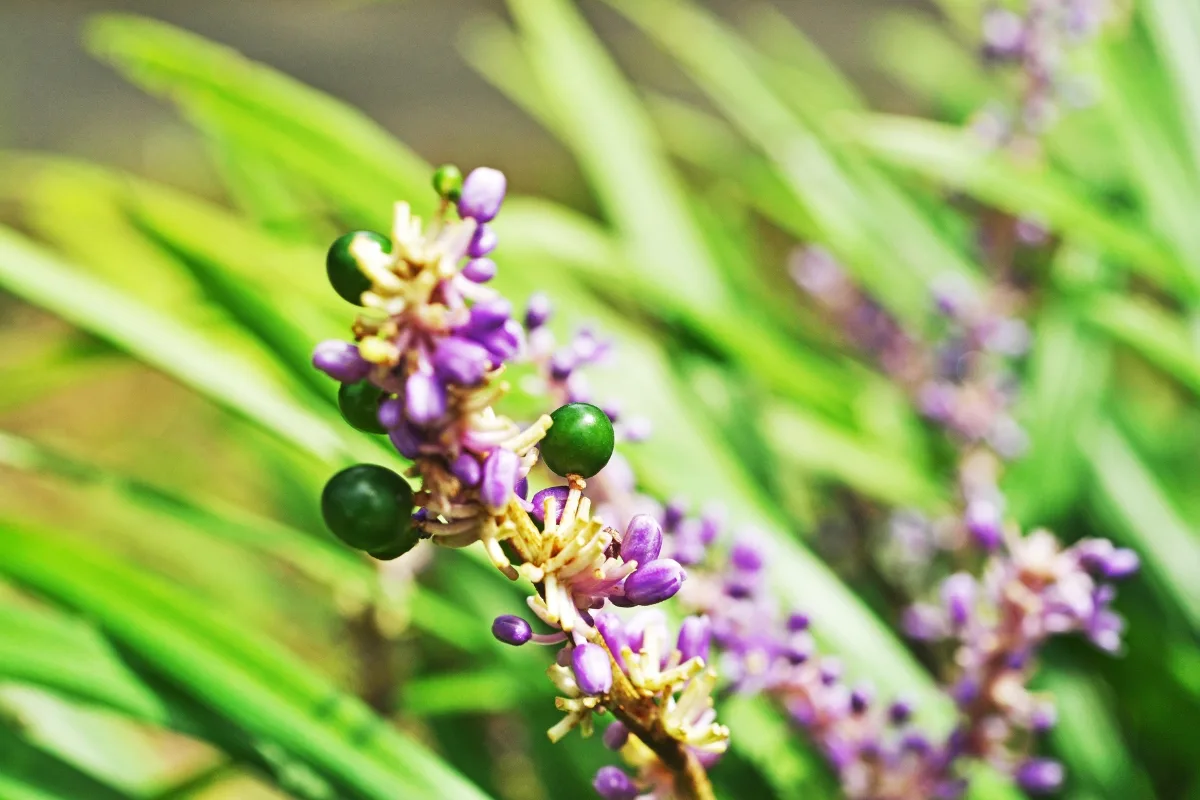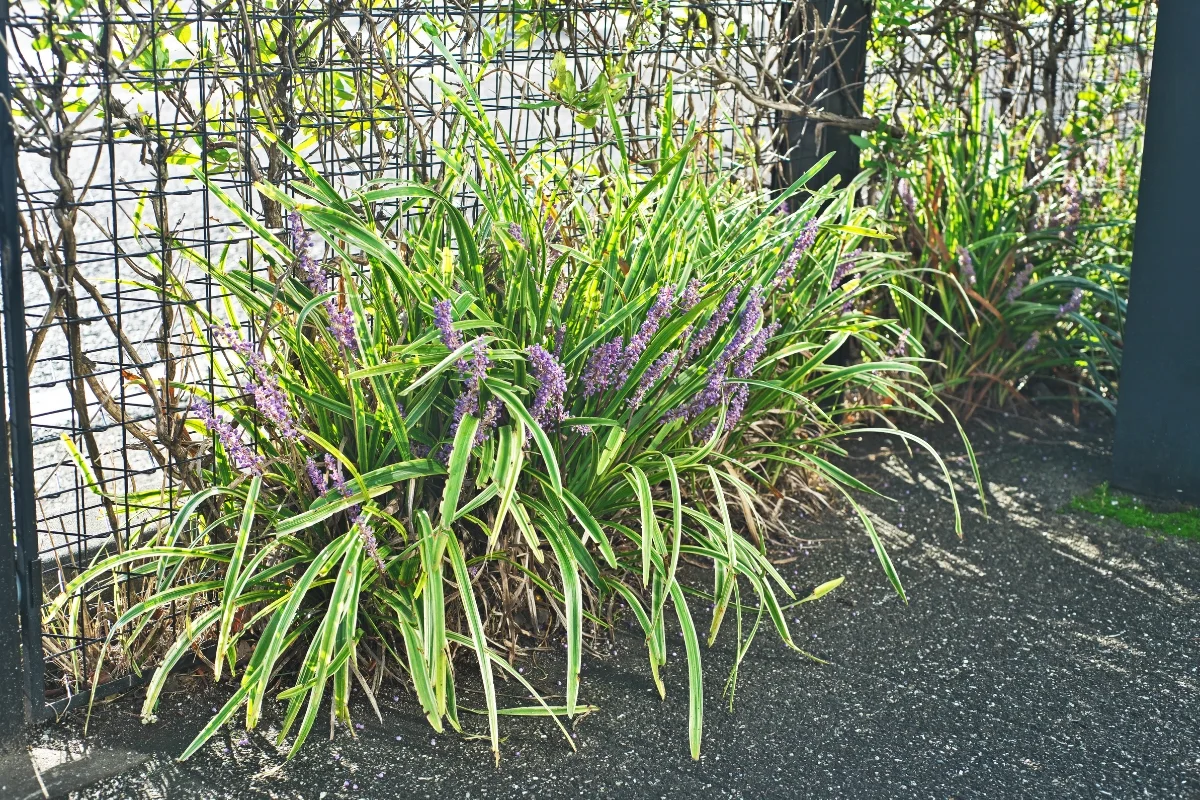Discover how to grow and manage Liriope spicata, also known as creeping lilyturf, with our guide to this vigorous ground cover plant.

I have a big problem. A big tree problem. A big black walnut tree problem.
Our backyard is dominated by a giant black walnut tree, which provides shade and privacy from the neighbors. However, walnut trees produce a toxin called juglone, which kills off competing plants underneath it.
There are some plants that can tolerate this toxin, such as hostas and ferns, and I have a ton of them planted around the base of the tree. But I need something to grow in the spaces between these plants, other than the weeds that seem to thrive on juglone (seriously, why?!?)

I'm always consulting this list of juglone resistant plants whenever I'm buying new plants for the backyard, to make sure they won't die in a few short months. But one entry caught my eye: liriope spicata.
Commonly known as creeping lilyturf, this plant is known for its vigorous growth and can spread quite rapidly. In some areas, it may even be considered invasive. However, when managed properly, liriope spicata can be an attractive groundcover that solves a tricky problem like mine.
Let's get growing!
This post contains affiliate links for your convenience. Purchases made through these links may earn me a small commission at no additional cost to you.
What is liriope spicata?
Liriope spicata, or creeping lilyturf, is a versatile and eye-catching plant that can add texture and color to your garden. There's also a clumping variety called liriope muscari that doesn't spread as much.

One of the most striking features of this plant is its foliage. It forms dense clusters of thin, strappy leaves that resemble ornamental grass. But unlike most grasses, liriope thrives in dry, shady conditions, such as under dense tree canopy.
Liriope spicata produces spikes of delicate light purple or white flowers in late summer. Dark berries form on the flower spikes after the flowers fade.

Creeping lilyturf typically grows to a height of 10-16 inches and can spread two feet or more through underground rhizomes. This vigorous growth makes it an effective ground cover, but it's essential to keep an eye on its spread, so it doesn't take over your garden.
The foliage remains evergreen in mild climates, providing year-round color and interest. In colder zones, however, the plant may experience tip dieback, which can affect its appearance during the winter months.

How to Grow Liriope Spicata
Now that you're familiar with the characteristics of creeping lilyturf, let's explore how to grow and care for this plant in your garden.
Choose the right location
Liriope spicata thrives in partial to full shade, making it a great option for groundcover under trees. It can tolerate some sun, but too much direct sunlight can cause leaf scorch.

My backyard gets full shade in the summer when the walnut tree is leafed out. The fence behind the tree also blocks any sun coming from the south, which is another reason why very few plants grow in this space.
Creeping lilyturf prefers well-draining soil with a slightly acidic to neutral pH. Amend your garden soil with compost or organic matter if necessary to improve conditions.
How to plant liriope
I bought ten bare root liriope plants online to sprinkle throughout the bare spots behind the tree. The roots are pretty small, so I can just poke a hole in the soil with my finger and pop them in!

If you buy potted liriope, dig a hole slightly larger than the root ball. Gently place the plant in the hole, ensuring that the top of the root ball is level with the soil surface. Fill in the hole with soil and gently firm it around the plant's base.
Water your newly planted Liriope spicata thoroughly to settle the soil and eliminate air pockets around the roots. These plants are fairly drought tolerant once established, so avoid overwatering as this can lead to root rot.
When to cut back liriope
The best time to cut back liriope is in late winter or early spring, just before new growth starts. Pruning at this time helps remove any damaged, dead, or unsightly foliage from the previous year and encourages fresh, healthy growth in the upcoming season.
If you prefer a tidier appearance or want to prevent self-seeding, you can also trim back the flower spikes after the plant has finished blooming and the berries are starting to form. This is typically in late summer or early fall.

Use sharp, clean pruning shears or hedge trimmers to make clean cuts. For a more significant haircut, you can cut the foliage back to about 2-3 inches above the ground. You can even mow large sections with the blades set to the tallest height.
How to control liriope
Liriope spicata's vigorous growth and ability to spread quickly can be a double-edged sword. While it makes an excellent ground cover, it can also become invasive and take over your garden if not managed correctly.

You can implement many of the same strategies as you would for controlling bamboo, because they spread in a similar way. Here are some tips for controlling the spread of creeping lilyturf in your landscape.
Planting barriers
Consider installing a root barrier to limit liriope's spread. You can use plastic edging or plant it near a concrete sidewalk. Bury the barrier at least 12 inches deep around the planting area, leaving 2 inches above the soil surface to prevent rhizomes from growing over the top.

Prune back rhizomes
Keep an eye on your plants throughout the growing season. Regularly inspect the area for signs of new growth and remove any unwanted shoots as soon as you spot them.
In late winter or early spring, before new growth starts, dig around the perimeter of your Liriope spicata clump and trim back any spreading rhizomes. This will help keep the plant contained and prevent it from invading nearby garden areas.
Use as a container plant
If you're concerned about Liriope spicata's potential invasiveness, consider growing it in containers. This will prevent the rhizomes from spreading through the soil, keeping the plant contained.
Ensure the container has adequate drainage holes and use well-draining potting soil. Consider adding a layer of landscape fabric to the bottom of the pot so the roots don't sneak out through the drainage holes.
Plant with caution
Be mindful of where you plant Liriope spicata in your garden. Avoid planting it close to established garden beds or where it might spread into neighboring properties. Luckily, our back fence is on top of a retaining wall, so it can't spread past our property line.

Frequently Asked Questions
Yes, you can mow Liriope spicata to maintain a neat appearance and encourage fresh growth. It's best to do this in late winter or early spring before new growth begins. Set your mower to its highest setting to avoid damaging the plant's crown.
While Liriope spicata is relatively durable, it's not the best choice for areas with heavy foot traffic. Occasional stepping on the plant is unlikely to cause significant damage, but constant trampling can lead to a decline in the plant's health and appearance.
If Liriope spicata becomes invasive or you need to remove it from your garden, there are several methods you can use:
Manual removal: Dig out the plants, making sure to remove as much of the root system as possible. This can be labor-intensive, especially if the plant has spread widely.
Chemical control: Apply a systemic herbicide, such as glyphosate, to the foliage according to the product's instructions. Be cautious when using herbicides, as they can harm surrounding plants.
Smothering: Cover the area with a thick layer of mulch or a sheet of landscape fabric to deprive the plants of sunlight. This can take several months to be effective.
The exact rate of spread will depend on various factors such as soil type, moisture, and light availability. In ideal conditions, Liriope spicata can spread two feet or more per year.
Check out these other groundcover options!




